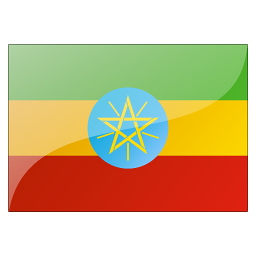



No matter how you look at it, the Unesco World Heritage–listed Simien Mountains National Park (የሰሜን ተራሮች ብሔራዊ ፓርክ) is one of Africa’s most beautiful ranges. This massive plateau, riven with gullies and pinnacles, offers tough but immensely rewarding trekking along the ridge that falls sheer to the plains far below. It’s not just the scenery (and altitude) that will leave you speechless, but also the excitement of sitting among a group of gelada monkeys, or watching magnificent walia ibex joust on rock ledges. Whether you come for a stroll or a two-week trek, the Simiens make a great companion to the historical circuit’s monument-viewing.

Lake Tana’s beauty can only be truly appreciated when you get out beyond the city to enjoy azure waters, a lush shoreline and rich birdlife. But even the lake's natural beauty plays second fiddle to its centuries-old monasteries, full of paintings and treasures, and some pretty impressive numbers: Tana is Ethiopia’s largest lake, covering more than 3500 sq km, and its waters are the source of the Blue Nile, which flows 5223km north to the Mediterranean Sea.

Southern Ethiopia is a canvas ripped in two. Its landscape is being torn apart by the Great Rift Valley, leaving a trail of lakes where you can go see crocodiles, hippos and birds – or just drink in the scenery from your hotel.

Since its establishment in the 19th century, Addis Ababa (አዲስ አበባ) has always seemed like a magical portal, a gateway to another world. For the rural masses of Ethiopia it was, and is, a city whose streets are paved in gold; for a foreign visitor, the gateway of Addis Ababa is at the verge of an ancient and mystical world. And yet, Addis – Africa’s fourth-largest city and its diplomatic capital – is also a sprawling city that many foreign visitors try to transit as quickly as possible. But take note: by skipping out on the contradictions of this complex city you run the risk of failing to understand Ethiopia altogether. And apart from anything else, Addis is the best place in the country to sample Ethiopian food, and has some wonderful museums and places to stay.

This pair of Omo River–side destinations makes an excellent day trip out of Turmi. Both Kangaten (ካንጋተን) and Kolcho (ቆሊቾ) are largely hassle-free, though it’s best to visit Nyangatom villages in the morning because many men are quite drunk by the afternoon. This way you also avoid the morning caravan of 4WDs occupying Kolcho.

Despite what anyone may tell you, the Simien Mountains are not visible from either of these two ridgetop viewpoints, 22km and 29km northeast of Gonder respectively, but the views are awesome nonetheless. At both Wunenia (ዉናኒያ) and Kosoye (ኮሶዬ), friendly local guides will lead you on walks of about an hour for a small tip. The guides aren't mandatory at Wunenia, but they know the best viewpoints and can help you find gelada monkeys. Longer treks are also possible.

När är det bäst tid att resa till Etiopien, hur tar man sig dit och vilka platser får man inte missa? Det och annat får du reda på i vår Etiopien-guide.

Some people like to describe Bahir Dar (ባህር ዳር) as the Ethiopian Riviera. The moniker sounds strange, but when you pull into town and see the wide streets shaded by palm trees and sweeping views across Lake Tana’s shimmering blue waters, you’ll perhaps understand. More than a block back from the shore, however, Bahir Dar is just another busy Ethiopian city.

For most visitors to Ethiopia, it’s all about the north. More than anywhere else on Earth, northern Ethiopia has the ability to wow you day after day after day.

Western Ethiopia is undisturbed and seldom visited, and while its towns are nothing special, it’s one of the most beautiful regions in Ethiopia. Rainforests and coffee plantations share the landscape with savannah grasslands, wildlife-rich swamps and high plateaus carpeted in fields of tef (an indigenous grass cultivated as a cereal, the base for making injera).